Transplantation Immunology by Birgit Sawitzki
- 格式:pdf
- 大小:6.84 MB
- 文档页数:30
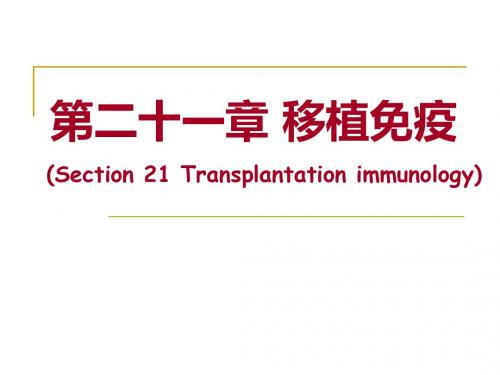

历代医家在继承《黄帝内经》思想并结合先人临床经验的基础上发展起来的“肺与大肠相表里”理论,是中医学脏腑相关理论的核心内容之一,论述了肺与大肠经络络属关系及生理病变关联:肺与大肠在经脉上互为络属,病变上相互影响,构成表里的相互关系。
随着现代医学手段的发展和应用,对“肺与“肺与大肠相表里”理论现代研究启示张纯芳,刘伟志,裴玲燕,柯愈诗,王琳(中央民族大学中国少数民族传统医学研究院/中国少数民族传统医学国家民委-教育部重点实验室,北京100081)[摘要]“肺与大肠相表里”理论在长期的辨证论治中显示出其临床优势,多采用通里攻下、开宣肺气的方法治疗肺肠同病。
目前对该理论的研究在不断深入,并且开始从微观水平上研究肺与大肠的内在联系,从胚胎组织学、免疫学及神经-内分泌系统等方面对肺经与大肠经相关性进行了研究,在一定程度上诠释与验证了肺与大肠联系的可能机制。
但从脏腑通过经络相互联系的复杂性角度来看,仅从某一层面或指标变化来表征肺与大肠的联系还不够全面。
因此提出,基于转录组学和生物信息学的方法,可以从疾病传变过程中海量的转录信息里筛选肺与大肠组织中的相同差异表达基因,查找有共同差异变化的信号通路,探寻“肺病及肠”和“肠病及肺”两种病理变化过程中的传变途径,从而为揭示该理论的内涵提供新的思路与方法。
[关键词]肺与大肠相表里;肺肠同病;生理机制;病理机制;转录组学[中图分类号]R223.1[文献标志码]A[文章编号]0257-358X (2016)08-0673-05Enlightenment of Modern Research on the Theory Lung and Large Intestine form an External -Internal RelationshipZHANG Chunfang ,LIU Wezhi ,PEI Lingyan ,KE Yushi ,WANG Lin(Institute of Traditional Medicine of Chinese Ethnic Minorities ,Minzu University of China/Key Laboratory of Traditional Medicine of Chinese Ethnic Minorities Sponsored by State Ethnic Affairs Commission and Min 鄄istry of Education ,Beijing 100081,China )Abstract The theory that the lung and the large intestine form an external -internal relationship has shown its superiority in long -term treatment based on syndrome differentiation.At present ,most of the diseases in 鄄volving the lung and the large intestine were treated by purgation and dispersing Qi of the lung.The re 鄄search on the theory is going deeper and the internal relationship between the lung and the large intestine is began to be studied from the microscopic level such as histology ,embryology ,immunology and neuro -en 鄄docrine system ,etc.,which gave the interpretation and verification of the possible mechanisms of the relation 鄄ship between the lung and the large intestine to a certain extent.But seeing from the complexity of mutual relations between Zang and Fu organs established by the meridians ,only characterizing the relationship be 鄄tween the lung and the large intestine from one level or the change of one index is not comprehensive.Therefore ,based on transcriptomics and bioinformatics ,the common differentially expressed genes in the tissue of the lung and the large intestine can be screened from huge amounts of transcription information in dis 鄄ease transmission ,the signal pathways which have the same changes of differences can be found and the transmission way in the pathological changes of “lung disease involving the large intestine ”and “large in 鄄testine disease involving the lung ”can be explored.All the above can provide new thoughts and methods for revealing the connotation of the theory.Key words the lung and the large intestine form an external -internal relationship ;diseases involving the lung and the large intestine ;physiological mechanism ;pathological mechanism ;transcriptomics[收稿日期]2015-05-25[基金项目]国家自然科学基金资助项目(编号:81403391)[作者简介]张纯芳(1992-),女,山东聊城人,2015年级硕士研究生,研究方向民族医药开发。
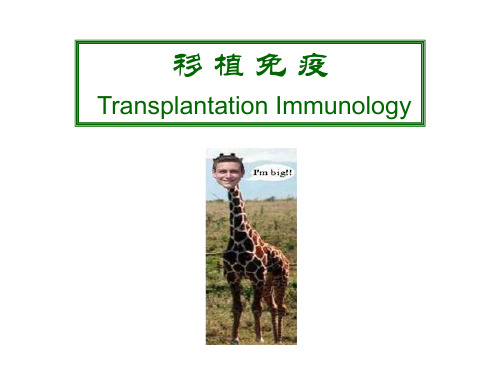
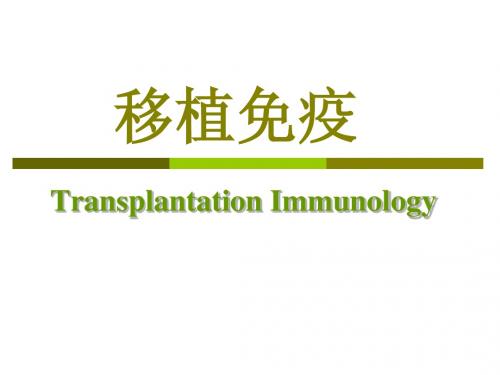
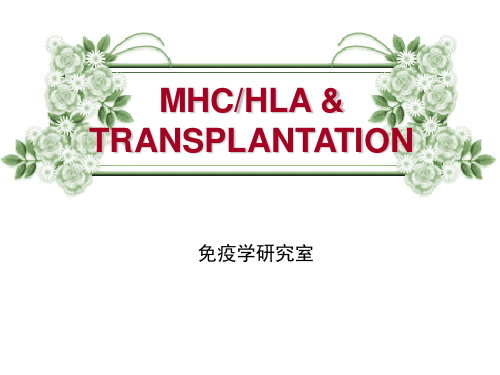
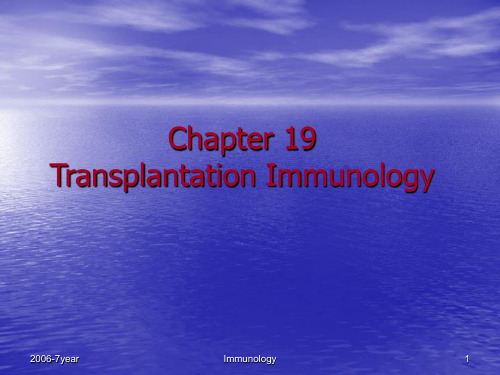
· 综述·国内外异种器官移植的现状及进展张小燕 王国辉 韩士超 戚若晨 刘克普 魏迪 杨晓剑 马帅军 窦科峰 秦卫军【摘要】 器官短缺已成为阻碍器官移植发展的主要难题,异种移植是解决全球器官匮乏最有价值的方法之一。
近年来,基因工程技术的发展和新型免疫抑制药的研发为异种移植提供了新的理论基础。
国外陆续开展基因修饰猪-非人灵长类动物或脑死亡受者的相关异种移植研究,并取得一些实质性的进展,但大部分的研究仍处于临床前阶段,距离投入临床跨越巨大。
因此,本文结合目前国内外最新的临床前实验研究进展,对异种移植的历史、基因修饰技术发展、异种移植排斥反应及免疫抑制方案等问题进行综述,以期为异种移植的进一步研究提供参考,促进异种移植临床应用,造福更多终末期疾病患者。
【关键词】 异种移植;基因修饰猪;免疫抑制药;非人灵长类动物;排斥反应;炎症反应;凝血功能障碍;感染【中图分类号】 R617,Q78 【文献标志码】 A 【文章编号】 1674-7445(2024)02-0017-06Present situation and progress of xenotransplantation at home and abroad Zhang Xiaoyan, Wang Guohui, Han Shichao,Qi Ruochen, Liu Kepu, Wei Di, Yang Xiaojian, Ma Shuaijun, Dou Kefeng, Qin Weijun. Department of Urology , Xijing Hospital of Air Force Medical University , Xi’an 710032, ChinaCorrespondingauthors:DouKefeng,Email:***************.cnQinWeijun,Email:**************.cn【Abstract 】 Organ shortage has become one of the major challenges hindering the development of organ transplantation. Xenotransplantation is one of the most valuable methods to resolve global organ shortage. In recent years,the development of genetic engineering technique and research and development of new immunosuppressant have provided novel theoretical basis for xenotransplantation. International scholars have successively carried out researches on xenotransplantation in genetically modified pigs to non-human primates or brain death recipients, making certain substantial progresses. However, most of the researches are still in the preclinical stage, far from clinical application.Therefore, according to the latest preclinical experimental research progress at home and abroad, the history of xenotransplantation, the development of gene modification technology, xenotransplantation rejection and immunosuppression regimens were reviewed, aiming to provide reference for subsequent research of xenotransplantation,promote clinical application of xenotransplantation and bring benefits to more patients with end-stage diseases.【Key words 】 Xenotransplantation; Genetically modified pig; Immunosuppressant; Non-human primate; Rejection;Inflammation; Coagulation disorder; InfectionDOI: 10.3969/j.issn.1674-7445.2023193基金项目:国家自然科学基金(82101322、82200845)作者单位: 710032 西安,空军军医大学西京医院泌尿外科作者简介:张小燕(ORCID 0000-0002-1199-988X ),硕士,住院医师,研究方向为肾移植与肾纤维化,Email :156****6095@通信作者:窦科峰(ORCID 0000-0003-1708-8048),主任医师,中国科学院院士,研究方向为异种移植与肝胆疾病,Email:***************.cn ;秦卫军(ORCID 0000-0001-5202-642X ),博士,主任医师,研究方向为肾移植与泌尿系肿瘤,Email:**************.cn第 15 卷 第 2 期器官移植Vol. 15 No.2 2024 年 3 月Organ Transplantation Mar. 2024 我国慢性肾病的发病率高达10.8%[1]。
移植免疫Transplantation Immunity一、移植 Transplantation移植是用手术或其他方法将细胞、组织或器官从原部位移植到自体或异体的一定部位,以替代或补偿移植部位所丧失的结构与功能。
500年前一位西班牙画家描绘先知 St.Cosmos 和 Damian 在天使的帮助下,为患者进行小腿移植的场面。
移植免疫学的发展史1596年,意大利外科医生成功进行最早一次成功的自体组织移植.19世纪初,尝试异体皮肤移植,但因排斥而失败。
1940年,Medewar证实了同种异体移植排斥是一种免疫现象.1954年,美国医生Murray在单卵双生姐妹间进行肾移植获得成功。
1962年,应用HLA分型技术选择合适的供体,第一次用无亲缘关系的供体肾进行异体移植,获得成功。
80年代初,由于环孢素A、FK-506 等应用,明显提高了器官移植的成功率,器官移植已广泛应用于临床。
21世纪,治疗脏器、造血系统终末期疾病不可代替的手段之一。
E Donnall Thomas 和 Joseph Murray 致力于器官移植和细胞移植的研究,并于 1990年荣获诺贝尔奖。
移植的主要类型:1 根据移植物的形态结构不同,可分为器官移植组织移植细胞移植基因移植器官移植 Organ Transplantation移植 transplantation移植物 graft供体 donor受体 recipient组织相容性 histocompatibility排斥反应 rejection2.器官移植的主要类型自体移植同种同基因移植同种异基因移植异种移植器官移植的主要类型:1.自体移植 Autograft 自身组织从一个部位移植到另一部位烧伤后正常皮瓣点状移植2.同种同基因移植Syngraft/ isograft同一物种但遗传背景完全相同的不同的个体间移植动物遗传品系相同人类同卵双生子间移植。
3.同种异基因移植 Allograft同一物种但遗传背景不完全相同个体间移植.动物不同遗传品系.人非同卵双生子间移植.4.异种移植 Xenograft不同种属个体间移植由于供体短缺,异种动物器官应用于人体同种异基因移植同一种属内遗传背景不同个体间的移植称为同种异基因移植。
Transplantation ImmunologyBirgit SawitzkiWS 2011/2012Email: birgit.sawitzki@charite.de• history• terms and definitions• MHC polymorphism• immune recognition / transplant rejection • effector mechanisms• conventional immunosuppressive drugs • new treatment strategiesFirst Transplantations1954 - Kidney - Murray - Boston1966 - Pancreas - Lillehei - Minneapolis 1967 - Liver - Starzl - Denver1967 - Heart - Barnard - Cape Town1981 - Heart/Lung - Reitz - Stanford1983 - Lung - Cooper - TorontoTransplant (Graft) = Transfer of tissue / organs / cellsor Inbred strainsSyngraftno rejection transplant rejectiontransplant rejection no rejectionImmune reaction because of:Genetic variation between donor and recipientAllele PolymorphismImmunological recognition of differences in• M ajor Histocompatibility Complex = MHCchromosomal region was identified due to incompatibility ofallo-transplants in mice• M inor Histocompatibility antigensMice (~50)transplant rejections despite identical MHC allelesclass Iclass IIA B C DP DQ DRMHC = HLA (human)polygen ...some MHC I/II- genes have over 200 allelesMHCI MHCIIPriority of HLA compatibilityDR - B- A - CA m o u n t o f d i f f e r e n t a l l e l e sTransplantation rulesImportance of MHC compatibility for graft survivaldata from 1996With introduction of newimmunosuppressive drugssuch as FK506, the differenceare not as apparent anymoreHyperacute rejectionGross and histologic features of hyperacute rejection. (A) Gross appearance of an ABO incompatible hyperacutely rejected renal allograft. The cortex appears edematous, bluish in color and congested. (B) This micrograph shows the characteristic features of hyperacute rejection including margination of neutrophils in the peritubular capillaries (PTC), interstitial hemorrhage and edema and fibrin thrombi.Mechanisms of immune activationT cell mediatedStimulus: Donor APCs within thetransplant (yellow)APCs interact and activate T cellswithin the draining lymphe nodeStrong immune response1-10% of T cells are allo-reactiveT cells destroy the transplantkillinginflammation (chronicrejection)Mechanisms of immune activationT cell mediatedStimulus: Donor APCs within thetransplant (yellow)APCs interact and activate T cellswithin the draining lymphe nodeStrong immune response1-10% of T cells are allo-reactiveT cells destroy the transplantkillinginflammation (chronicrejection)Recognition of allo-antigens after transplantation2 ways of antigen presentationDirect presentation Indirect presentationAntigen presentation by Donor APC’se.g. residual DC’s migrating into the lymph nodes: Allogeneic MHC+ costim. Molecules Activation of T cells recognising allogeneic MHC I and MHCII Antigen presentation by Recipient APC’se.g. DC’s after phagocytosis of donor cells:self MHC+ costim. Molecules Activation of T cells recognising peptides of allogeneic MHC I and MHCII presented by self MHCdirect indirect semidirect1. Recognition / primingantigen presentation by APC’s of the donor (direct presentation) or therecipient (indirect presentation)activation via T cell receptor and costimulatory molecules (e.g. CD28)2. Proliferation and activationclonal expansion of antigen specific CD4+ and CD8+ T cellsrecruitment of T cell dependent effector cells (NK cells, Macropages,Eosinophiles)3. Effector phasekilling by cytotoxic CD8+ T cells“delayed type hypersensitivity” (DTH, Typ IV) with production of cytokines,chemokines, adhesion molecules leading to an unspecific inflammationmediated by macrophagesantibody mediated tissue damage / destruction of transplant(ADCC or direct complement lyses)APC CD80 LFA-3 MHC I/II CD40 CD4/8 CD40LCD28T cellCD2CD3 12 31. Recognition / primingantigen presentation by APC’s of the donor (direct presentation) or therecipient (indirect presentation)activation via T cell receptor and costimulatory molecules (e.g. CD28)2. Proliferation and activationclonal expansion of antigen specific CD4+ and CD8+ T cellsrecruitment of T cell dependent effector cells (NK cells, Macropages,Eosinophiles)3. Effector phasekilling by cytotoxic CD8+ T cells“delayed type hypersensitivity” (DTH, Typ IV) with production of cytokines,chemokines, adhesion molecules leading to an unspecific inflammationmediated by macrophagesantibody mediated tissue damage / destruction of transplant(ADCC or direct complement lyses)RejectionCD8 CD8CD4 CD4CD4CD8 CD4CD4APC APC +++Neu M ΦNKMolecular phenotypes of rejection Type Intragraft infiltration and mediatorsacute humoral • ± circulating anti-donor HLA Abs (absorption by graft)• complement fixation / C4d deposition in peritubular capillaries • enrichment of neutrophils in peritubular and glomerular capillaries • rarely tubulitis (only when T cells are involved)• rarely infiltration of Foxp3+ T cellsacute cellular • interstitial infiltration and tubulitis by CD4+ (Th1; IFNg, TNFalpha, CD103+) and CD8+ (CTLs; granzyme B, perforin, FasL),• also infiltration of Foxp3+CD103+ Tregs especially within tubulichronic • transplantat glomerulopathy, arteriopathy, interstitial fibrosis and tubular atrophy• ± C4d deposition (chronic humoral rejection)• TGFß-mediated transition of tubular epithial cells into smooth muscle cells。